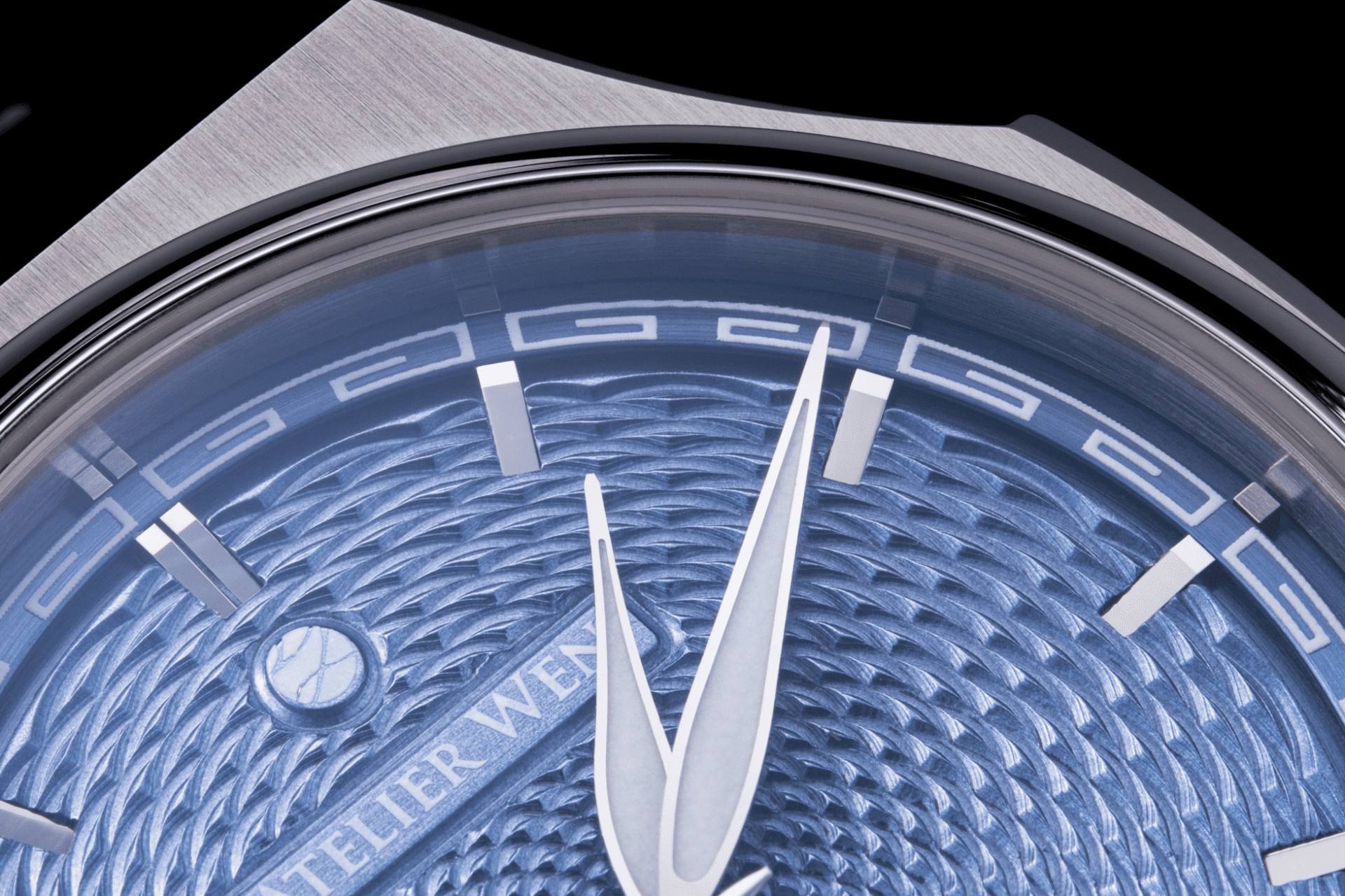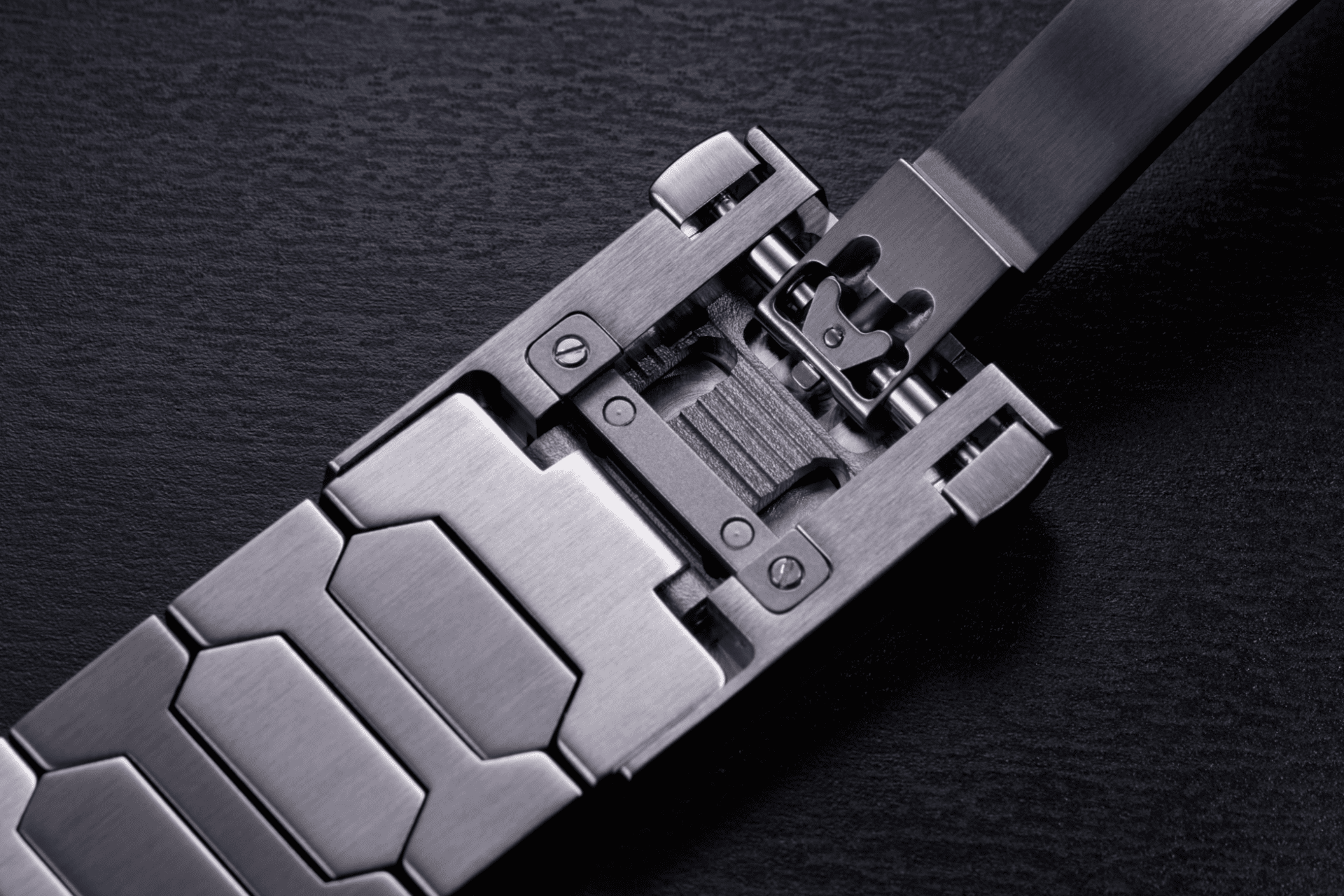The Atelier Wen Perception is a masterclass of guilloché craftmanship
Buffy AcaciaThe Atelier Wen Perception is a phenomenal example of a brand owner with a specific vision who refused to cut a single corner in the execution of their watch. This year, Cartier released a new version of the Tank Chinoise that pays tribute to Chinese architecture. But that same sentiment means significantly more coming from a proudly Chinese brand like Atelier Wen.
The dial
The dial of the Perception is an instant attention-grabber. The fanning guilloché pattern is hypnotic and enthralling, begging the viewer to pour over its intricacy and depth.
The interaction between the dial’s different elements is based around the Sunmao style of construction — a more complex and aesthetics-focused version of the mortise and tenon joinery technique that negates the need for iron nails. This can be seen as the applied hour markers jut into the dial, supporting its linkage to the chapter ring that’s decorated with a traditional pattern. The dial also has raised surfaces to support the Atelier Wen logo and name, helping it stand out with pride.
Given that modern CAD, CNC, and laser-etching techniques are so engrained within watch production all over the globe, it’s becoming more and more common to see even microbrands coming out with elaborately decorated dials and movements. Where Atelier Wen truly stands out is its dedication to honouring traditional manufacturing, and that’s where Cheng Yucai comes in. Master Cheng has had a fascinating life, having rashly quit his day job and moved to the modest city of Xinmi to dedicate his life to the study of guilloché. The inspiration was simply an engraved tobacco box coated in blue enamel, but it led to Master Cheng becoming the one and only guilloché craftsman in the whole of China.
To create a guilloché dial by hand, each copper blank is first sanded and burned to guarantee a flatness within 0.1mm. The blank is then mounted inside a “rose engine”, which is a special lathe that can move the cutting head in a pumping motion to create these symmetrical multi-lobed geometric patterns. If you ever used a spirograph in school to draw mandala-like flower patterns by placing your pencil inside a set of gears, the rose engine works in a very similar way. Although the technology can be traced all the way back to the 1500s, the machines are extraordinarily hard to come by, and the ones that can be found are usually damaged beyond repair. Master Cheng spent a number of years building his very own rose engine, having to machine most of the parts himself too.
Once the dial is mounted to the machine, the process of cutting the guilloché begins. It’s a process that requires an incredible amount of concentration and grace, exerting the correct amount of pressure for each pass, switching out cams at the right time, and ensuring that there will be no external vibrations or distractions. The latter element is what inspired Master Cheng to set up his workshop inside a mountain cave (!), but the outcome is clearly worth it. Any tiny imperfection is enough to scrap the entire dial, and the total time involved in their creation can be up to 30 hours. It’s the understanding of this process that makes the Atelier Wen Perception much more than just a pretty thing to look at, but a real labour of love.
There are three dial colours to choose from, each with their own significance. The sky blue is named Piao, representing a distant view of mountains in a misty sky. The second is a silvery grey called Ying, signifying shadows and reflections. This model comes with heat-blued hands that stand out more from the unique dial colour. The final version is Xia, a vibrant metallic orange that scatters the light like a dusty sunset.
The case
With so much attention payed to the dial, you could be forgiven for assuming that the case wasn’t given the same amount of thought, but that’s not quite true. While the extended “ears” of the case definitely have a hint of Nautilus inspiration, the sweeping curve between the sides and the ends of the lugs are actually representative of roofs typically found on Chinese pagodas. The front-facing flat surfaces are brushed to keep the dial as the focal point, however the polished bezel and chamfered edges give it an overall refinement that suits its ornamental status.
At 40mm in diameter and just 9.4mm thick, we can’t ignore the sportiness of the case behind the inherent elegance of the dial. With lean, focused edges and 100m of water resistance, it can truly be a go-anywhere and do-anything watch. The side profile of the watch is almost as attractive as the front view, with a slim mid-section punctuated by sharply downturning lugs and a beautifully finished signed crown.
The movement’s beating heart can be seen through the gaping mouth of a guardian lion, commonly found surrounding important Chinese buildings both ancient and modern. The decorative caseback with a display window is a great solution to representing both the artistry of the brand as well as the decoration on the movement, and seeing the automatic winding rotor swing past the window can be entertaining as well. Both the sapphire in that window as well as above the dial is coated with five layers of anti-reflective coating. You can also see your watch’s unique number etched below it.
The straps
The steel bracelet’s thin yet sturdy links match the draping lugs beautifully, with an integrated design that looks truly seamless from the outside while allowing for the interchangeable rubber straps in each watch’s respective colour. The all-brushed finishing keeps the attention on the head of the watch where it should be, however it will be difficult to ignore just how well the clasp is designed.
It’s often said that a clasp can make or break a bracelet experience, and Atelier Wen’s approach to designing this one is what we all wish every brand would do. Having studied all of the best steel clasps on offer from affordable to luxury, the Perception uses a custom-built deployant clasp with secure button-pushers and an on-the-fly micro-adjustment system. If you leave the house and find the watch is slightly too tight or loose, you can simply press down on the Atelier Wen logo and slide it to wherever is most comfortable.
The movement
While it may be fairly unheard of in most circles, the Dandong/Peacock SL-3006 movement that Atelier Wen used in their previous watch the Porcelain Odyssey was a total hit. Based on the ubiquitous ETA 2824-2, this movement has had a lot of iterations with subtle improvements such as a power reserve increase to 41 hours, an accuracy of +/-10 seconds per day, while retaining the 28,800 vibration per hour beat rate. The high level of decoration is done at the request of Atelier Wen, proving how strong the relationship between the watchmaker and movement manufacture is. The other, most important modification to the calibre is an extreme thinning of the movement down to 3.4mm, which is 1.2mm slimmer than the original ETA version. This is what allows the Atelier Wen Perception to be so slender at 9.4mm fully cased.
Atelier Wen Perception pricing and availability
The Atelier Wen Perception will be available in limited quantities for US$2,088, which is extremely affordable considering the level of intricacy involved in the watch. If you don’t mind spending a reasonable amount of money on a relatively new brand, then the Atelier Wen Perception can surely be an exciting addition to your collection. You can sign up for more details when the watch launches today (April 18) at their website here.
| Case Material | Stainless steel |
| Case Dimensions | 40mm x 9.4mm |
| Water-Resistance | 100m |
| Dial | Blue, grey, orange |
| Straps | Steel bracelet, colour matched rubber |
| Movement | Customised Dandong/Peacock SL-3006 |
| Power Reserve | 41 hours |
| Complications | Hours, minutes, seconds |
| Price | US$2,088 |

















